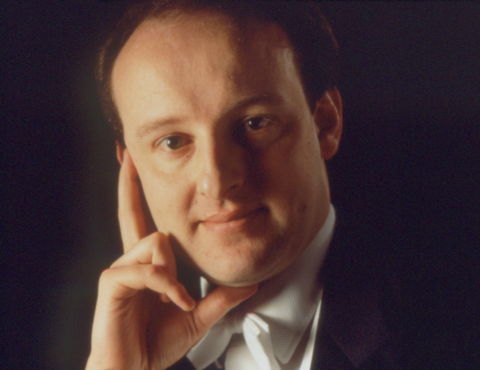|
FINELY EXECUTED

A Beethoven recital by James Lisney,
reviewed by THOMAS BIELINSKI
Bringing his cycle of Beethoven's piano sonatas to a close, James Lisney tackled the final three with valour [Wigmore Hall, London, UK, 10 November 2008]. That these three marathon sonatas -- which marked a watershed in the sonata's history -- will whet the appetite of any serious music lover withstands any dispute, though such a formidable programme as this will always deserve a rendition of at least equal standing. Indeed, only an accordingly high level of pianism and musicianship will ever attest to the timeless stature of these works.

James Lisney. Photo © Clive Barda
|
Lisney set out assertively, though was soon offset by one or two potentially dangerous memory slips that may, for some, have hampered the flow of the first sonata, Op 109 in E major. Nonetheless, and exhibiting command over the remaining repertoire, Lisney was in full swing by the latter half of the second work, Op 110 in A flat, and evinced just that kind of finely judged musicianship which qualified the performance as worthy of this mighty work, thus anticipating many finely executed moments to come.
It is of no dispute that with each of the three sonatas Beethoven strove for nothing less than to defy convention, at times verging on the iconoclastic, and thereby calling for a hitherto uncharted level of tolerance on the part of the listener. Yet it is precisely such Beethovenian novelties, the sheer intractability, dare I say strangeness of some material which poses such an arduous task for the performer. Public appreciation for such compositional 'innovations' would have been something of an anachronism in their time; qualities which could have only been apprehended with the advent of more modern trends in nineteenth-century compositional style.
Lisney's ability to articulate such material in an intelligible manner was, on the whole, a success. Faced with the challenges posed by the third movement of Op 110 which makes much of an improvisatory style, it was at times difficult to discern the fine line between what was intended as the more concrete aspects of the form as opposed to the improvisatory.
Perhaps arising out of some technical constraint, the clarity of phrasing at these instances was also compromised, and grasping the contours of the form amongst the complexities of the texture was therefore difficult. Imparting the logic behind such complex and challenging moments will surely prove to be a perennial challenge for all pianists, though it would be unfair to say that such instances were many, thus for some just the right level of balance may still have been perceived, not to mention many such torturous figurations that were articulated in a convincing and coherent manner.
The opening to the final sonata Op 111 was sufficiently vigorous, and Beethoven's rhetoric in the opening bars, which sought to startle, was conveyed by a defiant manner which set the tone for the remainder of the work. Counterbalanced by some truly profound moments of heavenly serenity which characterizes Beethoven's mature style, James finished this one particularly finely.
All in all, save a few memory slips, the challenges were met with resolve, though intricate phrasing was at times constrained by the technical demands. The restlessness of late Beethoven was conveyed to the audience, no doubt, which was all the more palpable in the setting of a live performance.
Eager for more, Lisney treated the audience to an encore which he pulled out insouciantly, rounding off a pleasant evening.
Copyright © 24 November 2008 Thomas Bielinski, London UK

|

